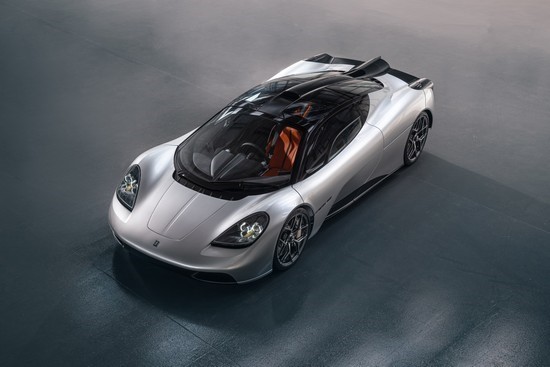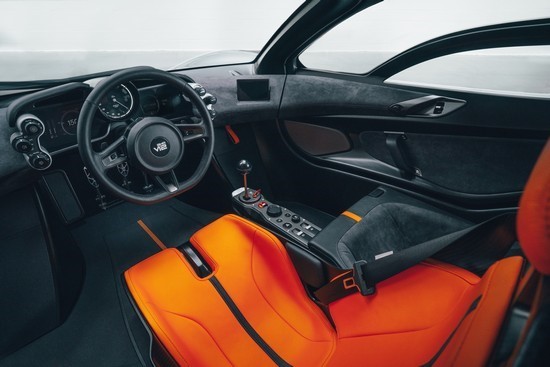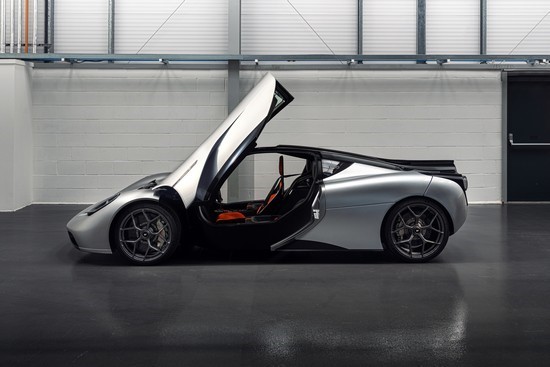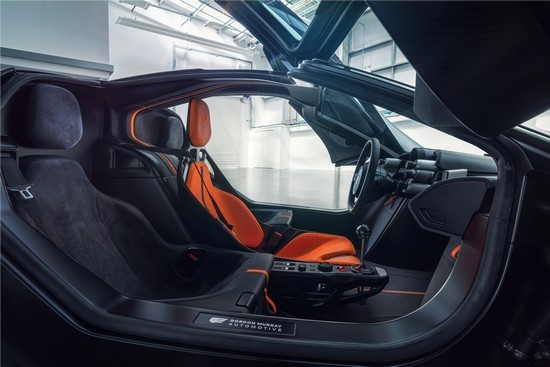After two decades as a motoring writer, the perennially most often asked
question is what single car would oneself have, given free choice of any car
past, present, or future? At best, the answer is some muddled shortlist of many
iconic and some less obvious cars lusted after by dyed in the wool petrolheads.
اضافة اعلان

The more complex answer is compartmentalized, and conditional — taking into account many
considerations. However, the indecision has ended. For the foreseeable future,
the firm answer is the British-built Gordon Murray Automotive T.50.
Even for those accustomed to accessing other “common” supercars, the T.50 will likely remain un-driven.
While
akin to an article of faith that the GMA T.50 is the car to have and the best
out there, it fails to answer the second most commonly asked question of what
is the best car driven. But with the only 100 examples slated for production
already spoken for, at an eye-watering £2.36-million sans tax, the T.50 will be
well out of bound for even garden variety millionaires, let alone most
automotive journalists. Even for those accustomed to accessing other “common”
supercars, the T.50 will likely remain un-driven.

Instead, the T.50’s
specifications and reputation since its 2020 unveiling — rather than test
drives — are what will fuel over-active imaginations and conjure fantasies. In
fact, for most, the T.50 will remain an un-seen “unicorn” car, with most
examples immediately spirited into hiding as prized collectors’ cars or
financial investments by lucky owners the moment they roll off the production
line this year.
However, that is
perhaps not what Gordon Murray had in mind when designing the T.50 with the
express purpose of being the world’s finest and “greatest analog driver’s car”.

Perhaps singularly
most awaited by car cognoscenti, the T.50 puts into shade all the heavy,
over-hyped hybrid hypercars, soulless overweight EV exotics, and even
turbo-boosted supercars around. No less technologically advanced than such
cars, the GMA T.50 is, however, a meticulously engineered and minutely honed
object of single-minded purity, conceived by its legendarily innovative
eponymous Formula One car designer and engineer.
Commemorating
Murray’s 50-year career and successor to the now iconic — and then most
convincing “world’s best” 1992–98 Murray-designed McLaren F1 — the T.50 reaps
three decades of technological advancement since.
An undiluted
driver’s car with fastidious weight saving, the compact 4,352mm long and
1,850mm wide T.50 weighs just 986kg. Around a third lighter than most super and
hypercars, the T.50 aims at providing the sort of dynamic response, nimble
agility, and uncorrupted driver involvement that cannot be fully replicated by
heavier cars, including those employing complicated active suspension and
sophisticated electronic systems. Powered by the world’s most power-intensive
road-going V12 positioned in the center of its rear-drive carbon-fiber frame,
the T.50’s 3.9-liter naturally-aspirated engine constitutes a semi-structural
component.

Co-developed with
Cosworth, the T.50’s stratospherically high revving bespoke engine can spin up
to 12,100rpm, yet delivers 71 percent of its maximum torque by just 2,500rpm
for versatile and tractable low-speed daily driving. Generating 663PS at
11,500rpm and 467Nm torque at 9,000rpm, the T.50’s engine, however, increases
output to 700PS for short bursts, utilizing ram induction, in V-Max Boost driving
mode. With excellent 672PS/ton power-to-weight and expectedly exceptional and
sophisticated aerodynamic airflow management, the T.50’s yet undisclosed
performance figures should prove quite remarkable.
Boasting best ever
166ps/liter road-going naturally-aspirated engine power density, the T.50’s
free-revving V12 plays its part in contributing the 50 percent that Murray
estimates an engine factors into the driving experience and pleasure derived
from it. Meanwhile, the T.50 will undoubtedly also benefit from top-notch
dynamic abilities, and an interactively analog driving feel with its
finely-tuned pushrod double wishbone suspension and balanced weighting. Set on
providing an immersive old-school experience, the T.50 also employs an
authentic three-pedal six-speed manual gearbox, unlike most modern supercars.
Steering clear of
hybrid and electric routes, the T.50 however employs a 48-volt
starter-generator system to power its unique ground effects fan.

The biggest trick
up the T.50’s sleeve, its ground effects aerodynamic fan harks back to Murray’s
revolutionary 1978 Brabham BT46B Formula One “Fan Car”. A sophisticated fan
system pulls the car tighter to the ground through various inlets, ducts,
diffuser, Venturi tunnel, and rear aerofoil, it generates huge stability and
grip levels, and can alternatively reduce drag and enhance efficiency,
depending on driving mode.
Lending an otherwise
beautifully understated yet viscerally and timelessly elegant design a certain
“Batmobile” aesthetic, the T.50’s fan doubles as a cooling system. Centrally
located behind the middle driving position, it accentuates the T.50’s symmetric
sense of balance and central line emphasis, while up-swinging doors provide
easy cabin access. Recreating its McLaren F1 predecessor’s signature staggered
three-abreast seating and central driving position, the T.50’s driver-focused
layout, large windscreen, and low bonnet allow unimpeded front views.
 Read more Drive
Jordan News
Read more Drive
Jordan News





